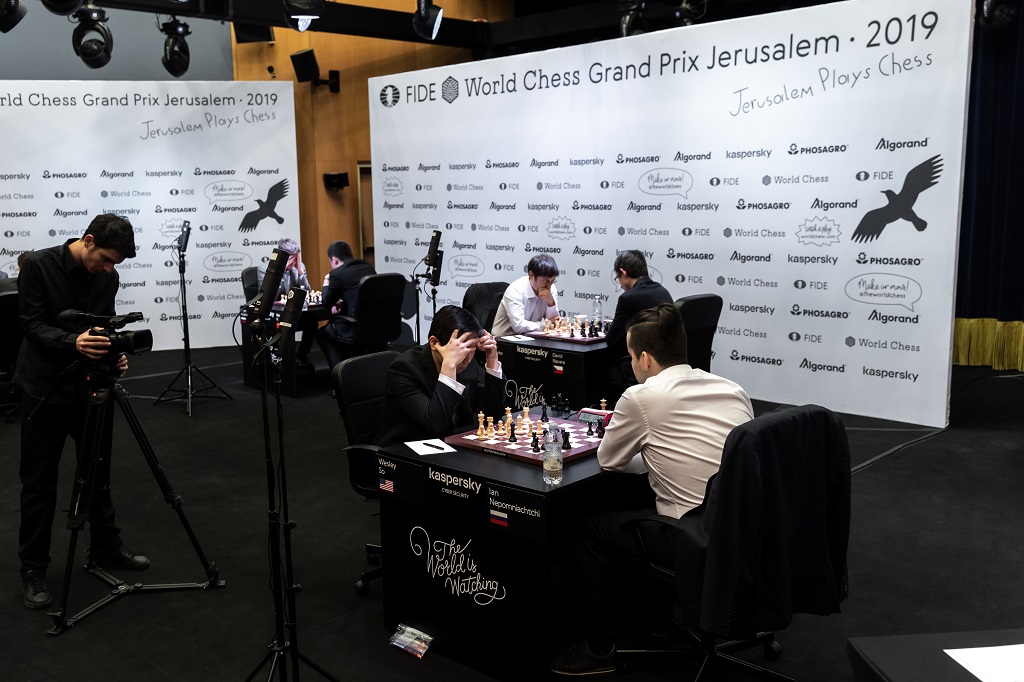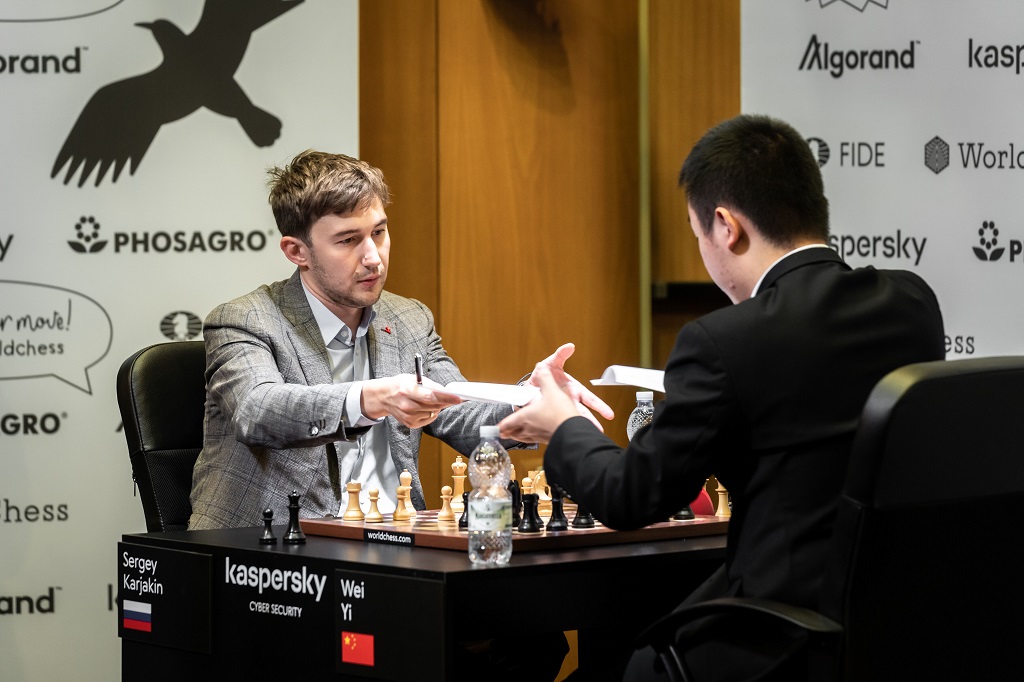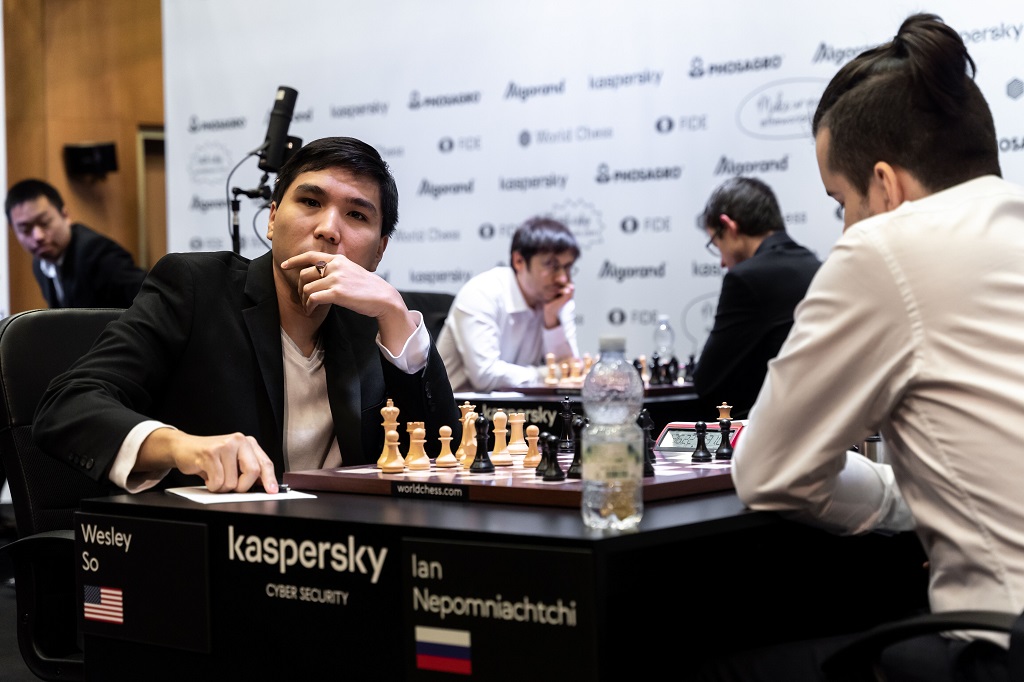


 The fourth leg of the FIDE Grand Prix is being played in Jerusalem, Israel. The 16-player knockout has a €130,000 prize fund, with the series as a whole having an additional prize fund of €280,000 plus two qualifying spots for the 2020 Candidates Tournament. The tournament takes place in the Notre Dame of Jerusalem Centre from December 11th to 23rd.
The fourth leg of the FIDE Grand Prix is being played in Jerusalem, Israel. The 16-player knockout has a €130,000 prize fund, with the series as a whole having an additional prize fund of €280,000 plus two qualifying spots for the 2020 Candidates Tournament. The tournament takes place in the Notre Dame of Jerusalem Centre from December 11th to 23rd.
The stakes are as high as they can be at the top of the bracket in Jerusalem, a situation that resulted in the players taking pragmatic decisions in the first games of the quarter-finals. At this point, taking risks apparently seemed unjustified for Maxime Vachier-Lagrave and Wesley So, who both had the white pieces in game one. Dmitry Jakovenko and Sergey Karjakin, albeit not in the fight for the Candidates, also decided to call it a day quickly. Karjakin, who signed an 8-move draw against Wei Yi, explained:
It's more or less two reasons why it finished so quickly. First of all, I had a difficult match yesterday, but not only this, it's also that my opponent was very well-prepared for the sideline, which is not popular at all.
In fact, the former World Championship challenger only defeated Pentala Harikrishna at the Armageddon stage on Friday, while regarding the situation on the board he was talking about the following position:
Wei Yi played the novelty 6...g5 here, which according to Karjakin means he certainly looked at the line, as nobody would play such a compromising advance without being confident about the ensuing variations. The Russian recounted how it only dawned on him why his rival knew this line over the board. He remembered that Anish Giri had played this with White, and the Dutch grandmaster was Wei Yi's opponent in round one.

Eight moves passed and the game is over — Sergey Karjakin v Wei Yi | Photo: Niki Riga
The longest game of the day, in terms of moves, was Wesley So v Ian Nepomniachtchi. The American pretty much blitzed out all his moves out of a Grünfeld Defence before agreeing to a draw in a queenless position with a typical Grünfeld pawn structure imbalance — Black had a passer on the a-file. Nepomniachtchi considered his opponent's bishop pair to be a strong asset and decided he will try his chances when he gets the white pieces on Sunday. For So, winning this match would give him an outside chance to reach the Candidates, especially if Vachier-Lagrave is knocked out by Dmitry Andreikin.

We might still see Wesley So in the 2020 Candidates | Photo: Niki Riga
All games available at Live.Chessbase.com
Official broadcast with GM Evgeny Miroshnichenko via worldchess.com
Previous reports: